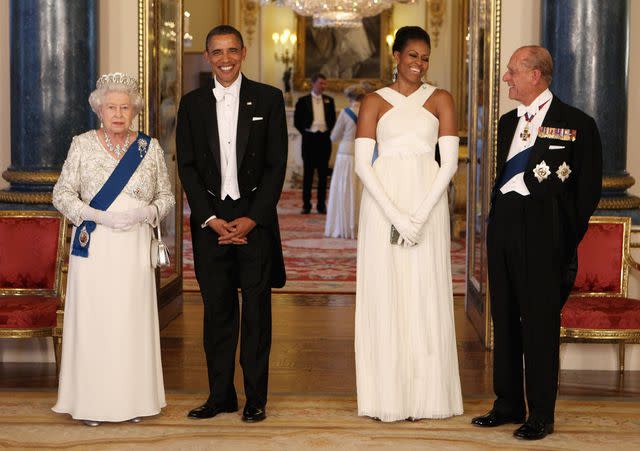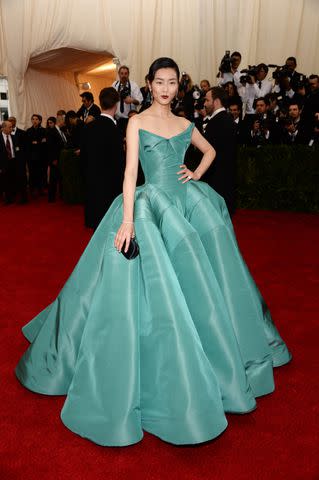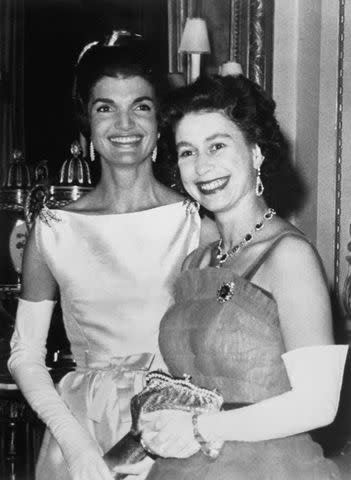White Tie Attire Is the Most Formal Dress Code—Here's What It Means
Don’t worry, we’re here to help.

Getty Images
From cocktail attire and black tie optional to strict black tie events, we understand the importance of dressing appropriately. More importantly, we recognize the challenges in interpreting these dress codes, often a gray area for many. Our goal is to demystify these dress codes, ensuring you feel confident and stylish for any event. As we mentioned earlier, we are dedicated to preparing you for all of life’s occasions.
White tie attire is the pinnacle of formal wear. It originated in the 18th century, evolving from European court dress to its current style during the Victorian era. It was the standard for events among the upper echelon. Central to this attire is the tailcoat, which evolved from the 19th-century frock coat, paired with a white waistcoat, hence “white tie.”
In the unlikely event you find yourself invited to a white tie attire gala—don’t worry (and yes, we're a tad envious of your social circle)—we've got your back. It's not that we think anyone is unworthy of attending such a grand event; it's just that white tie attire is incredibly rare these days, except for high-profile occasions like The Met Gala or that annual nepotism baby extravaganza (Le Bal des Débutantes... which, by the way, is the chicest thing ever). But we digress. Let’s get back on track.
The History of White Tie Attire
Nowadays, you're more likely to receive a detailed mood board for your friend’s bachelorette party in Nashville, complete with mandatory color schemes and themes for each night, than to open a wedding invitation requesting white tie attire. But being prepared (and informed!) never hurts, especially when it comes to fashion history.
After World War II, the popularity of white tie attire waned due to more relaxed dress codes and the rise of black tie. While black tie is now the standard as far as dressing up goes, white tie is still kickin’. Reserved for the most formal occasions such as balls, state banquets, and high-society gatherings. Even after hundreds of years, this ultra-luxe (and, let's be honest, somewhat confusing) dress code continues to symbolize the utmost in elegance and sophistication.

Chris Jackson - WPA Pool/Getty Images
White Tie vs. Black Tie
The difference between white tie and black tie attire is primarily defined in menswear; the rules for women are somewhat more vague.
With white tie, the more formal of the two, gents have a pretty strict script: a black tailcoat, a white wing-collared shirt, and the essential white bow tie. There’s absolutely no room for improvisation here. Then there's black tie for men – the classic black tuxedo, complete with all the traditional accompaniments—a look we're all familiar with.
But let’s shift our focus to women's attire. For both dress codes, formal wear is a must, but women don’t have such an exact formula to follow. Let’s put it this way: there’s no “white tie optional"; this dress code demands the highest level of formality. For white tie events, think top-tier elegance: full-length ball gowns, gloves, and precious jewels. Black tie, on the other hand, allows for more creative leeway. While floor-length gowns are standard, a midi dress can also work, as long as it embodies the formal dress code through embellishments, feathers, lace, or dramatic volume—the fancier, the better.
Tips
The key difference to serve as a reference is this: A midi dress can be a hit for black tie, but for white tie, you need to go all out, as there's much less room for experimentation.

Dimitrios Kambouris/Getty Images
What to Wear to a White Tie Event
So, that brings us here. You’ve received an invitation that reads “White Tie Attire.” Historically, white tie has been synonymous with ball gowns. Think of celebrities at the Met Gala, Old Hollywood stars, and princesses—all in spectacular ball gowns. Thus, the focal point, of course, is the gown.
Couture is the dream for such an occasion, and if you’re heading to a white tie gala, it’s likely within your reach. But if you're more Cinderella pre-fairy godmother and don’t have a couturier on call, here's what to look for: start with a classic ball gown featuring a fitted bodice and a sweeping full skirt. Focus on intricate designs, high-quality fabrics, and craftsmanship—these elements make the dress white tie worthy. While subdued colors were the norm back in the day, modern interpretations embrace a broader range of hues, as long as they maintain a formal appearance. When it comes to glitz, don’t be afraid to go for it.
Design elements can include beading, lace, embroidery, and other embellishments that add luxury and uniqueness. But if you’re not a glitzy girl, don’t fret—a simple ball gown in luxurious fabric can be just as formal as a sparkly one.
For accessories, consider long, white opera-length gloves, a hallmark of white tie elegance. They are no longer mandatory but add an extra layer of formality. Jewelry should reflect the grandeur of high society—think precious stones and family heirlooms. While we love a good costume jewelry piece, for white tie, authenticity is key—opt for the real deal or keep it understated. The final touch? A chic clutch and simple heels to complete your ensemble.

Getty Images
The Takeaway
White tie attire is incredibly rare these days. It’s seldom seen on wedding invitations and is really only witnessed at high society galas, presidential inaugurations, and royal engagements. But, you can never be too prepared! Below, we’ve included the essential pieces to help you achieve white tie perfection.
A Timeless Ballgown: The epitome of elegance and a foolproof choice. Since the gown's simplicity makes it an excellent canvas, this is your chance to dazzle with accessories.
Opera-Length Gloves: Though not mandatory, opera-length gloves were once a staple of any white-tie ensemble. Why not embrace tradition? Adding these gloves can lend an air of timeless sophistication to your outfit, reminiscent of a bygone era.
An Evening Clutch: Essential for formal wear, no one does it better than Judith Leiber. These iconic clutches, adorned with crystals, offer the perfect touch of sparkle without being too much.
Jewels, Jewels, Jewels: Think along the lines of a 30-carat diamond ring that's been in the family for generations. However, there is an alternative. Consider lab-grown diamond earrings from Grown Brilliance’s High Jewelry Collection.
For more InStyle news, make sure to sign up for our newsletter!
Read the original article on InStyle.

